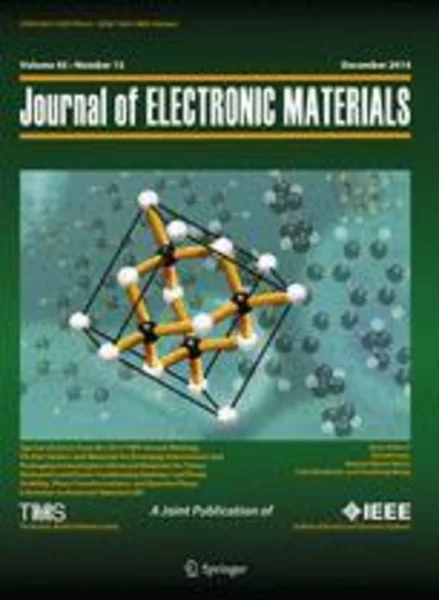-
crystal plasticity finite-element analysis of deformation behavior in multiple-grained lead-free solder joints
جزئیات بیشتر مقاله- تاریخ ارائه: 1392/07/24
- تاریخ انتشار در تی پی بین: 1392/07/24
- تعداد بازدید: 978
- تعداد پرسش و پاسخ ها: 0
- شماره تماس دبیرخانه رویداد: -
the elastic and plastic anisotropy of the tin phase in a pb-free tin-based solder joint has a very important effect on the reliability of solder joints. the crystal plasticity finite-element (cpfe) method takes into account the effect of anisotropy, and it can be used to solve crystal mechanical deformation problems under complicated external and internal boundary conditions imposed by inter- and intragrain micromechanical interactions. in this study, experimental lap-shear test results from the literature are used to calibrate the cpfe model. the spatial neighbor orientation relationships of the crystals were assessed by studying four different sets of orientations using a very simple model to establish a basis for further development of the model. average shear strain and schmid factor analyses were applied to study the activity of slip systems. further optimization of model parameters using comparisons with experiments will be needed to identify more suitable rules for stress evolution among the 10 slip systems in sn. by suppression of some of the slip systems the cpfe model is able to simulate heterogeneous deformation phenomena that are similar to those observed in experiments. this work establishes a basis for an incremental model development strategy based upon experiments, modeling, and comparative analysis to establish model parameters that could predict the slip processes that lead to damage evolution in lead-free solder joints.
مقالات جدیدترین رویدادها
-
استفاده از تحلیل اهمیت-عملکرد در ارائه الگوی مدیریت خلاقیت سازمانی و ارائه راهکار جهت بهبود
-
بررسی تاثیر ارزش وجوه نقد مازاد بر ساختار سرمایه شرکت های پذیرفته شده در بورس اوراق بهادار تهران
-
بررسی تأثیر سطح افشای ریسک بر قرارداد بدهی شرکت های پذیرفته شده در بورس اوراق بهادار تهران
-
بررسی تأثیر رتبه بندی اعتباری مبتنی بر مدل امتیاز بازار نوظهور بر نقد شوندگی سهام با تأکید بر خصوصی سازی شرکت ها
-
تأثیر آمیخته بازاریابی پوشاک ایرانی بر تصویر ذهنی مشتری پوشاک ایرانی (هاکوپیان)
-
ارزیابی تأثیر فرکانس ورودی بر شدت روانگرایی بستر موج شکن مرکب با استفاده از آزمایشات مدل میزلرزه 1g
-
بررسی مطالعات انجام شده در حوزه فراموشی سازمانی در ایران
-
بررسی اندرکنش خاک و دیوار انعطاف پذیر ساحلی تحت بارگذاری زلزله
-
بررسی میزان افسردگی دانشجویان دانشکده پرستاری و مامایی دانشگاه علوم پزشکی زنجان، 1379
-
حذف کدورت در شیوه های متداول و نوین تصفیه آب شرب
مقالات جدیدترین ژورنال ها
-
مدیریت و بررسی افسردگی دانش آموزان دختر مقطع متوسطه دوم در دروان کرونا در شهرستان دزفول
-
مدیریت و بررسی خرد سیاسی در اندیشه ی فردوسی در ادب ایران
-
واکاوی و مدیریت توصیفی قلمدان(جاکلیدی)ضریح در موزه آستان قدس رضوی
-
بررسی تاثیر خلاقیت، دانش و انگیزه کارکنان بر پیشنهادات نوآورانه کارکنان ( مورد مطالعه: هتل های 3 و 4 ستاره استان کرمان)
-
بررسی تاثیر کیفیت سیستم های اطلاعاتی بر تصمیم گیری موفق در شرکتهای تولیدی استان اصفهان (مورد مطالعه: مدیران شرکتهای تولیدی استان اصفهان)
-
بررسی و تحلیل اسناد مالکیت معارض در نظام قضایی
-
واکاوی آراء مبتنی بر جبران خسارت در پرتو حقوق بین الملل محیط زیست
-
بررسی جایگاه بانوان در اشعار عصر بیداری، مطالعه موردی سید اشرف الدین گیلانی «نسیم شمال»
-
بررسی عوامل ورزش های بومی محلی در توسعه گردشگری ورزشی (مطالعه موردی: استان یزد)
-
the relationship between working capital management and criterions for value-based performance of the companies listed in tehran stock exchange




سوال خود را در مورد این مقاله مطرح نمایید :